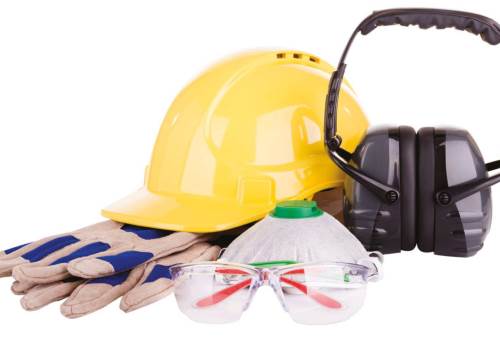It is highly important to wear the correct Personal Protective Equipment (PPE) when tiling on site or in someone’s home.
Tiling without PPE is leaving yourself open to acute injury or long-term health effects – which could stop you working in the short term, or end your tiling career completely.
First and foremost you need to protect your hands. Whilst tiling your hands are extremely vulnerable as you handle tiles, cutters, blades and tile adhesive and grout which can be hazardous and cause nasty cement burns if you’re not protected.
Wearing protective gloves provide barrier protection against cement-burns or adhesive irritation and can also provide extra grip when handling tiles – preventing any accidents.
Some specialist gloves on the market also provide abrasion and cut resistance, giving tiler reassurance when using a tile cutter or cutting instruments.
As well as protecting your hands, you should also ensure that you wear adequate eye protection. Your eyes are extremely vulnerable to a number of hazards when tiling, from splashes of adhesive or grout, or chips and shrapnel when cutting tiles.
Wearing a pair of wrap-around safety specs provides great protection from all directions – keeping you sight intact. There are a number of products on the market, including lightweight versions and those with anti-mist and ant-scratch lenses.
When mixing adhesive, grout or levelling compound, it may also be necessary to wear a dust mask to stop you breathing in harmful dust particles.
As well as a dust mask it is also worth investing in an extraction fan, or a device such as a whale tail – a special vacuum adapter which fits around a mixing bucket.
And finally, while they’re not a necessity, tilers might also want to invest in a good pair of kneepads. Knees are the most likely to be damaged in construction jobs. Too many hours kneeling on tiles and floors can cause long-term problems such as knee joint arthrosis – damage to the cartilage.
Kneepads must comply with EN 14404, which ensures that a particular model meets the minimum protection requirements. The level of benefits, the buffering capacity of the material and comfort are all important issues when choosing your kneepads.




